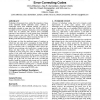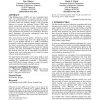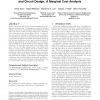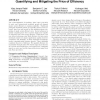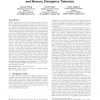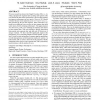ISCA
2010
IEEE
14 years 3 months ago
2010
IEEE
Technology advancements have enabled the integration of large on-die embedded DRAM (eDRAM) caches. eDRAM is significantly denser than traditional SRAMs, but must be periodically r...
ISCA
2010
IEEE
14 years 3 months ago
2010
IEEE
Chip Multiprocessors (CMPs) are now commodity hardware, but commoditization of parallel software remains elusive. In the near term, the current trend of increased coreper-socket c...
ISCA
2010
IEEE
14 years 4 months ago
2010
IEEE
Given the multicore microprocessor revolution, we argue that the architecture research community needs a dramatic increase in simulation capacity. We believe FPGA Architecture Mod...
ISCA
2010
IEEE
14 years 4 months ago
2010
IEEE
Power consumption has become a major constraint in the design of processors today. To optimize a processor for energyefficiency requires an examination of energy-performance trade...
ISCA
2010
IEEE
14 years 4 months ago
2010
IEEE
Recent advances in computing have led to an explosion in the amount of data being generated. Processing the ever-growing data in a timely manner has made throughput computing an i...
ISCA
2010
IEEE
14 years 4 months ago
2010
IEEE
Phase change memory (PCM) is an emerging memory technology for future computing systems. Compared to other non-volatile memory alternatives, PCM is more matured to production, and...
ISCA
2010
IEEE
14 years 4 months ago
2010
IEEE
ISCA
2010
IEEE
14 years 4 months ago
2010
IEEE
SIMD organizations amortize the area and power of fetch, decode, and issue logic across multiple processing units in order to maximize throughput for a given area and power budget...
ISCA
2010
IEEE
14 years 4 months ago
2010
IEEE
Next generation tiled microarchitectures are going to be limited by off-chip misses and by on-chip network usage. Furthermore, these platforms will run an heterogeneous mix of ap...
ISCA
2010
IEEE
14 years 4 months ago
2010
IEEE
Previous research has shown that Staged Execution (SE), i.e., dividing a program into segments and executing each segment at the core that has the data and/or functionality to bes...
